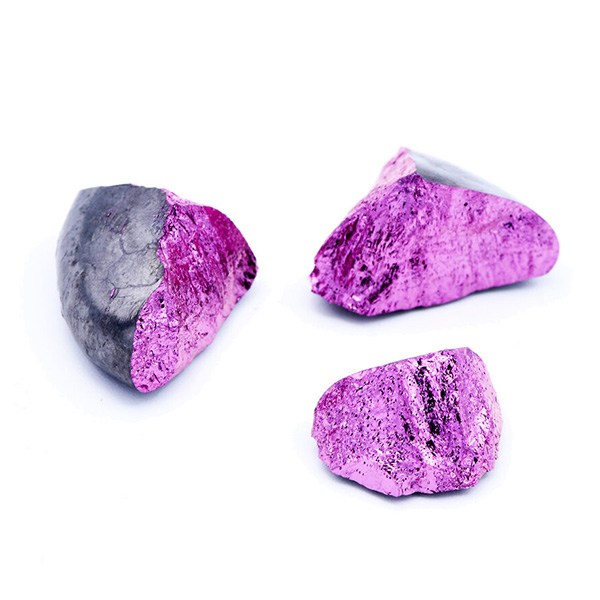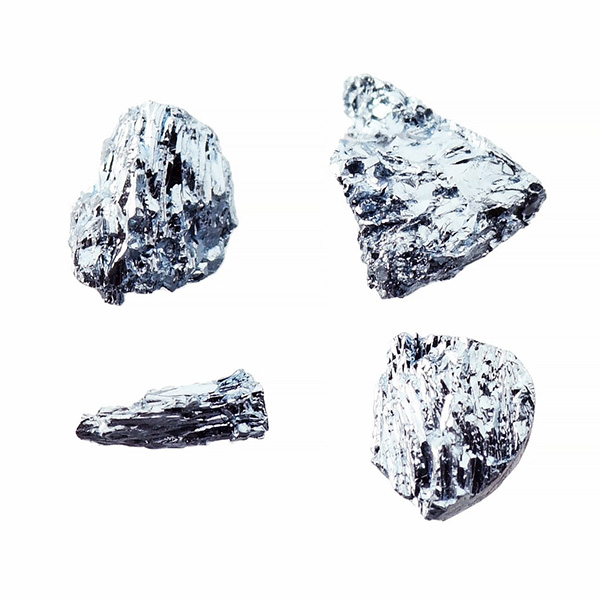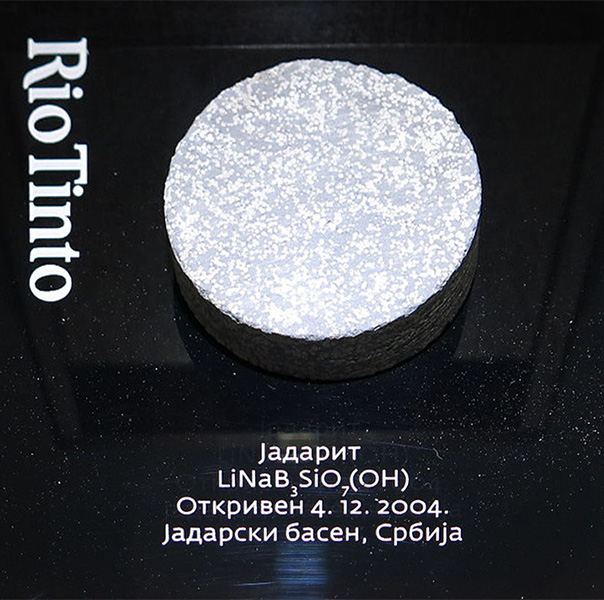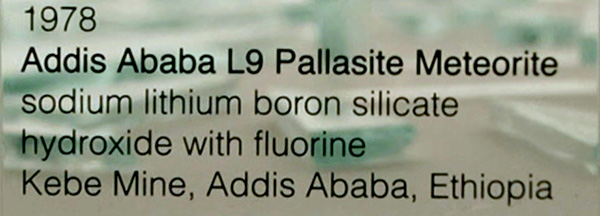Elements and Compounds
Alcohol
(Ethanol)
Formula: C2H5OH
Ethanol, commonly referred to as alcohol, is used in beverages, as a fuel, and as a solvent in the pharmaceutical and cosmetics industries.
Why It's Cool: Beyond its social and cultural significance, ethanol's versatility as a biofuel and its role in hand sanitizers highlight its importance in both sustainable energy solutions and public health.
Alum
(Potassium Aluminum Sulfate, KAl(SO4)2·12H2O)
Formula: KAl(SO4)2·12H2O
Alum is known for its use in water purification, in the textile industry as a mordant, and in traditional medicine and cosmetics for its astringent properties.
Why It's Cool: The multifaceted use of alum, from purifying drinking water to tightening skin and even stopping bleeding in small cuts, showcases its longstanding importance in both daily life and various industries over centuries.
Ammonia
(NH3)
Formula: NH3
A colorless gas with a pungent smell, ammonia is used widely in the production of fertilizers, cleaning products, and in the synthesis of various chemicals.
Why It's Cool: Ammonia's role in feeding the world through its use in fertilizers cannot be overstated, demonstrating the direct impact of chemistry on global agriculture and food security. Additionally, its natural occurrence in the human body and the environment ties industrial innovation back to biological processes.
Blue Vitriol
(Copper(II) Sulfate))
Formula: CuSO4·5H2O
(for the pentahydrate form)
Blue vitriol is a bright blue crystal that dissolves in water to give a blue solution. It's used in agriculture as a fungicide, in chemistry for electroplating copper, and in art for patinas.
Why It's Cool: Its vibrant blue crystals are not only visually stunning but also an essential tool in chemistry labs for teaching about crystal structure and the properties of solutions.
Borax
(Sodium Borate)
Formula: Na2B4O7·10H2O
Borax is a white powder obtained from evaporated lakes. It's used in laundry and cleaning products, as a flux in metallurgy, and to create slime as a fun science experiment.
Why It's Cool: Beyond its cleaning prowess, borax is critical in artisanal gold mining as a safer alternative to mercury, binding to tiny gold particles to form an amalgam when heated.
Caustic Soda
(Sodium Hydroxide, NaOH)
Formula: NaOH
A strong base and highly caustic substance, caustic soda is widely used in soap making, paper production, and various chemical processes.
Why It's Cool: It plays a critical role in the manufacture of biodiesel by reacting with fats or oils to produce glycerin and biodiesel, showcasing its importance in renewable energy technologies.
Fools Gold
(Pyrite)
Formula: FeS2
Pyrite, known as fool's gold, is an iron sulfide mineral with a metallic luster and pale brass-yellow hue that resembles gold to the untrained eye.
Why It's Cool: Its use in historical times as a fire-starting material, due to its ability to spark when struck against steel, underscores its practical value beyond its deceptive appearance.
Royal Gold

Gold doesn't like to form compounds but it turns out that it's possible to alloy it with aluminum and, oddly enough, the alloy is... purple.
Why It's Cool: Seriously? It's gold (~80%), but it's purple. Unfortunately it's extremely brittle so it's not great for jewelry.
Sky Gold

As just mentioned, gold doesn't like to form compounds but it turns out that it's possible to alloy it with indium and this alloy is a pale blue.
Why It's Cool: Using the creativity in material science, it's possible to blur boundaries between art and chemistry. (As with Royal Gold, it's extremely brittle so it's not great for jewelry.)
Green Vitriol
(Iron(II) Sulfate)
Formula: FeSO4
Also known as iron(II) sulfate, green vitriol is a blue-green crystal used as a nutrient in the garden, in water purification, and as a mordant in dyeing.
Why It's Cool: Historically used in the manufacture of ink and as a wood preservative, its role in replenishing iron in the soil to promote plant growth underscores its importance in both industry and agriculture.
Kryptonite
(Jadarite - (LiNaSiB3O7(OH))
Special Note: Kryptonite is a fictional material from the Superman comics, known for its ability to weaken Superman. Its depiction varies, but it's often shown as a green, glowing mineral.

Why It's Cool: The concept of kryptonite, while fictional, has permeated popular culture as a metaphor for an individual's specific weakness, regardless of their overall strength or power, illustrating the universal theme of vulnerability.
Description: Jadarite is a white to pale green mineral discovered in 2006 in the Jadar Valley, Serbia. Its chemical formula, LiNaSiB3O7(OH), includes lithium and boron, elements of interest for various industrial applications, including batteries and aerospace materials. The mineral forms in veins within serpentine rock and is notable for its unique composition and crystal structure.
Association with Kryptonite: Jadarite garnered significant attention upon discovery due to its mineralogical resemblance to the fictional "Kryptonite," famously known as the substance that weakens Superman in the DC Comics universe. The excitement stems from its chemical formula, which bears an uncanny similarity to the fictional description of Kryptonite. In the Superman Returns film, Kryptonite is described with the fictional chemical formula Sodium Lithium Boron Silicate Hydroxide with Fluorine, which closely matches the composition of Jadarite, minus the fluorine and with some variations in the structure.

While Jadarite does not emit radiation or have any known detrimental effects on humans, its link to Kryptonite has made it a subject of interest beyond the scientific community, bridging the gap between popular culture and mineralogy. This association has not only heightened interest in the mineral but also in the field of geology and the study of new minerals and their potential applications.
Mineral Oil
General Info: A colorless and odorless oil that's a by-product of the distillation of petroleum to produce gasoline and other petroleum-based products. It's used in cosmetics, medicine (as a laxative), and as a lubricant.
Why It's Cool: Mineral oil's wide range of applications, from skincare products to preserving wooden kitchen utensils and machinery lubrication, demonstrates its versatility. Its role in the pharmaceutical industry as a gentle laxative further illustrates its diverse utility.
Royal Phosphorus
Technically called "violet phosphorus," it's an allotrope produced by annealing red phophorus.
Why It's Cool: The notion of "Royal Phosphorus" evokes the idea of elevated quality or potency, illustrating how even elemental substances can be imbued with a sense of mystery and distinction through human creativity and innovation.
Potash
(Potassium Carbonate)
Formula: K2CO3
Potash is a common name for various mined and manufactured salts that contain potassium in water-soluble form. Historically, it was used in soap making, glass production, and as a fertilizer.
Why It's Cool: The historical importance of potash in early industry and agriculture as one of the first international commodities highlights its role in the development of global trade networks and the advancement of agricultural techniques.
Quicksilver
(Mercury, Hg)
Atomic Number: 80
Atomic Weight: 200.590
Quicksilver, or mercury, is a unique metal that is liquid at room temperature. It's used in thermometers, barometers, and amalgams for dental fillings.
Why It's Cool: Mercury's liquid state at room temperature and its ability to form amalgams with other metals have made it invaluable in scientific research, medical instruments, and even alchemy, where it symbolized the fluid and changeable.
Sea Salt
General Info: Sea salt is produced by evaporating seawater and contains trace minerals and elements. It's used in cooking, cosmetics, and as a natural preservative.
Why It's Cool: The subtle differences in flavor and mineral content from different parts of the world make sea salt not just a culinary ingredient but a way to taste and experience the ocean's diversity.
Table Salt
(Sodium Chloride)
Formula: NaCl
The most common form of salt, essential for human life, used in cooking, food preservation, and as an electrolyte in the body.
Why It's Cool: Table salt's ability to enhance flavor, preserve food, and its critical role in human physiology highlight the fundamental importance of this simple compound to civilization and human health.
Saltpeter
(Potassium Nitrate)
Formula: KNO3
Saltpeter is used in the production of gunpowder, as a fertilizer, and in food preservation.
Why It's Cool: Its role in the development of gunpowder and, by extension, the profound impact on the course of history and warfare, underscores the powerful influence of natural compounds on human society.
Sugar
(Sucrose)
Formula: C12H22O11
A sweet-tasting carbohydrate obtained primarily from sugarcane and sugar beets, used extensively in food and beverages for flavoring and preservation.
Why It's Cool: Sugar's role in food preservation, fermentation processes
(like in brewing and baking), and its transformation into biofuels and bioplastics showcases the substance's incredible
versatility and its pivotal role in culinary arts and industrial applications.
Vinegar
General Info: A liquid consisting of about 5–20% acetic acid, water, and trace chemicals, which may include flavorings. Vinegar is widely used in cooking, as a cleaner, and in medicine.
Why It's Cool: The production of vinegar through the fermentation of ethanol by acetic acid bacteria is a beautiful example of how humans have harnessed microbial processes for culinary, cleaning, and medicinal purposes.
Water
(H2O)
Formula: H2O
The most essential compound for life, water is unique in its ability to dissolve a wide range of substances, making it vital for all biological processes and many industrial applications.
Why It's Cool: Water's properties, such as its solid state
(ice) being less dense than its liquid state, allowing it to float and insulate aquatic life in cold climates, and its critical role in
regulating the Earth's temperature, underscore its uniqueness and indispensability for life on Earth.